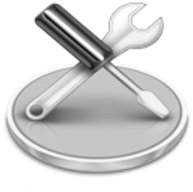 After my recent rants about Oracle changing URLs and breaking stuff, I’ve actually done some changes myself. 🙂
After my recent rants about Oracle changing URLs and breaking stuff, I’ve actually done some changes myself. 🙂
From time to time change is forced on internet content producers. This might be because of platform changes, or changes in the way search engines behave. The important thing is how you handle that change.
Followers of the blog will know I recently made my website responsive. That happened in part because Google recently announced they would downgrade the rankings of sites that weren’t “mobile friendly” and “responsive”. The search ranking were only meant to affect mobile searches. What they didn’t say, but many people including myself believe, is that these rankings actually affect normal desktop-based searches as well. When this Google announcement was made, I noticed a drop in my hit rate. Once I changed the site to be responsive, the hit rate went up again somewhat. When I recently corrected about 100 of the remaining non-responsive articles, the hit rate went up again. It could be conincidence, but it certainly seems there was a bleed-over of this ranking change into the desktop side of things, which represents over 95% of my traffic. Those changes affected content, but not the URLs to the content.
Since I’m revisiting almost every article to fix broken links to Oracle docs, I thought I would take the opportunity to do some additional site maintenance, specifically in the following two areas.
- HTTPS : About 9 months ago I got a certificate for the website to allow it to be accessed using HTTPS. This was also influenced by a Google decision that they would improve the ranking of content that was available over HTTPS, as well as HTTP. It was part of their “HTTPS Everywhere” campaign. Even though the site could handle HTTPS, I did not make it the default. As of a couple of days ago, you may have noticed all pages on oracle-base.com are now delivered over HTTPS. Unfortunately, this represents a URL change as far as the internet is concerned, so it means lots of broken links, unless you handle it properly. More about that later.
- Removal of “.php” extension : You will notice many blogs and websites don’t display a file extension of pages, or display a generic “.htm” or “.html” extension. It’s pretty easy to do this using query rewrites in Apache or a “.htaccess” file. For a while, the site could be accessed with or without the “.php” extension. Now it is removed by default. The nice thing about this is you can change the underlying technology at any time, without having to support an inconsistent file extension. Once again, this represents a URL change.
So how do you manage this change without pissing off “the internet”?
The answer is rewrites and redirects done in real web pages, Apache config or “.htaccess” files. Essentially, you are supporting the old URL and redirecting the browser to the new URL, using a 301 redirect, so all search engines know the content has moved location and can be re-indexed in that new location. Over time, all the links from Google will go directly to the new URL.
So that means you can remove the redirects after a while right? NO! People will have links from their website to the old URLs forever. People will have bookmarks in their browsers forever. If you are going to change a URL, the old URL must be maintained forever.
Over the years I’ve made lots of structural changes to the site.
- When my website started it was written in Active Server Pages, using a “.asp” extension.
- After a while I switched to PHP, using a “.php” extension.
- I used to name pages using initcap. A couple of years ago I switched to lower case and “-” separated names.
- About 9 months ago I removed the “www.” because it seemed pointless in this day and age.
- I’ve just swicthed to HTTPS.
- I’ve just removed the “.php” extension.
If we look at a really old article, probably about 15 years old, we will see the history of these changes in the following URLs.
- http://www.oracle-base.com/articles/8i/ConstraintCheckingUpdates.asp
- http://www.oracle-base.com/articles/8i/ConstraintCheckingUpdates.php
- http://www.oracle-base.com/articles/8i/constraint-checking-updates.php
- http://oracle-base.com/articles/8i/constraint-checking-updates.php
- https://oracle-base.com/articles/8i/constraint-checking-updates.php
- https://oracle-base.com/articles/8i/constraint-checking-updates
So all those structural changes over the last 15 years should have resulted in zero broken links, zero pissed off content producers who link to my content and zero uninformed search engines.
Now I’m not perfect, so if anyone finds something that is broken, I will fix it, assuming it’s not your bad typing or copy/pasting. 🙂
Cheers
Tim…
PS. Any structural changes, regardless of how well you do your 301 redirects, can result in lower search rankings, so it should not be done on a whim if you really care about hitting that top spot on Google. This is my hobby, so I will do whatever I want. 🙂
Site maintenance and how to manage changing URLs : https://t.co/N0lp8Nx22J
RT @oraclebase: Site maintenance and how to manage changing URLs : https://t.co/N0lp8Nx22J
Site maintenance and how to manage changing URLs @oraclebase http://t.co/NDNR0BaDww #OrclDBA #odtug